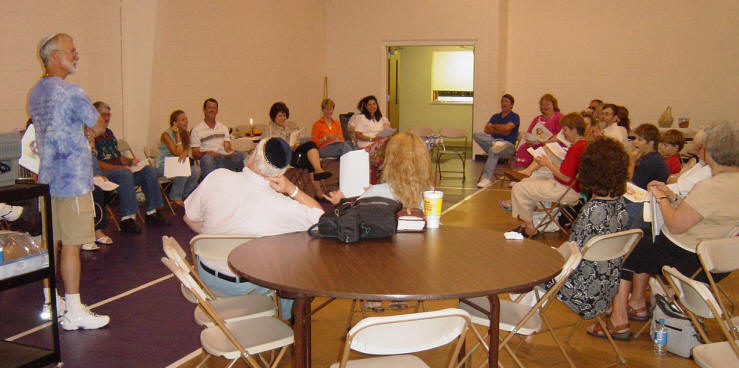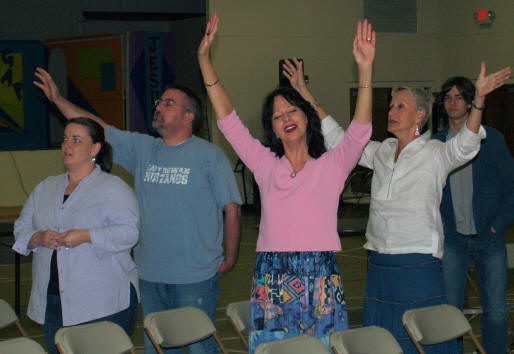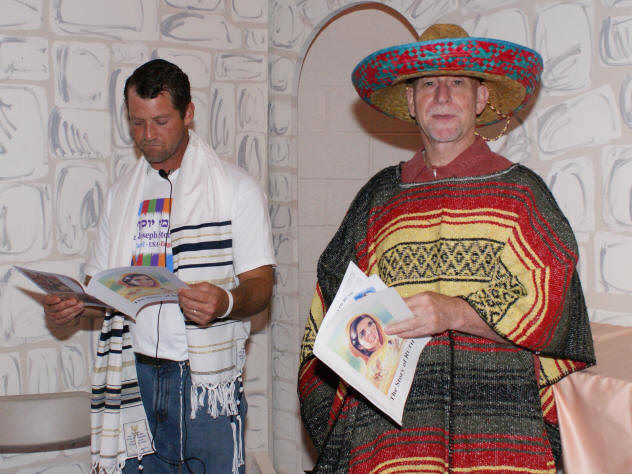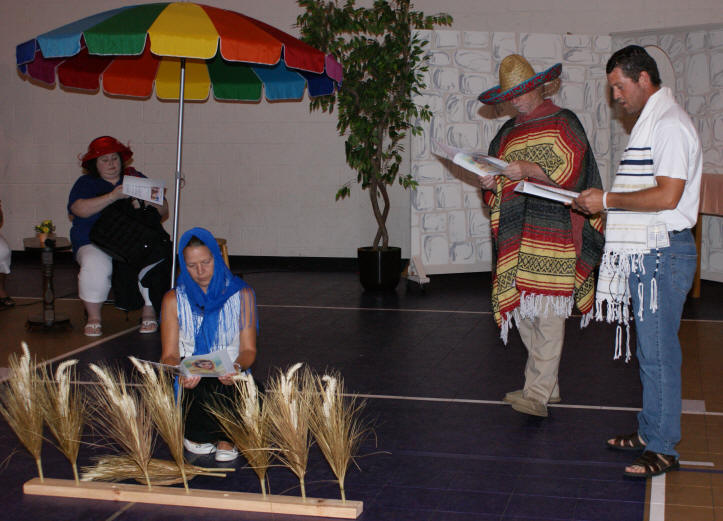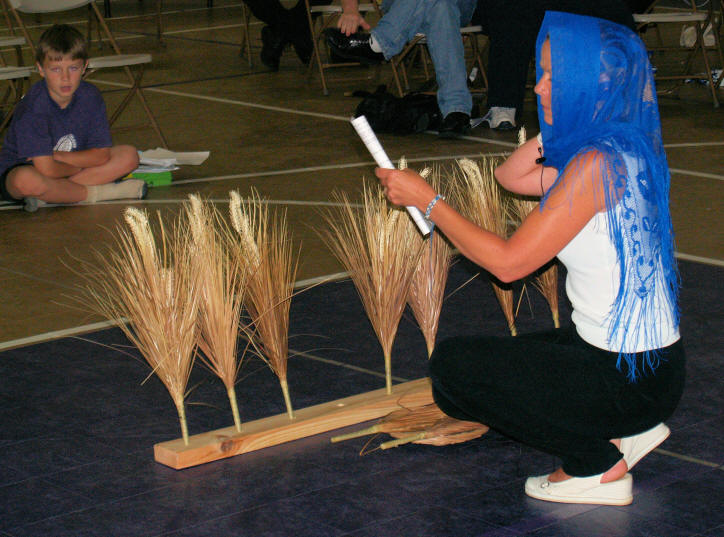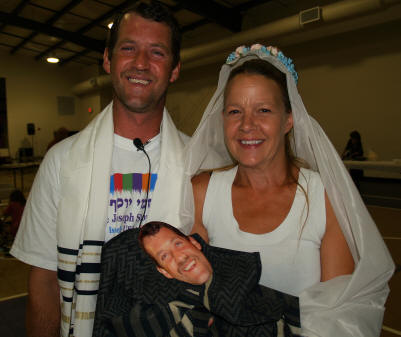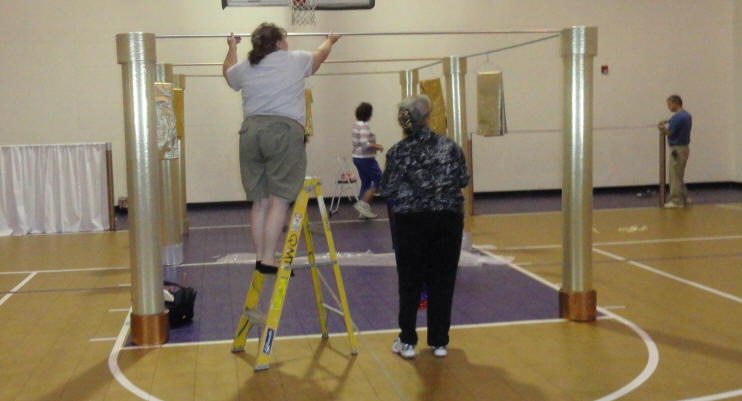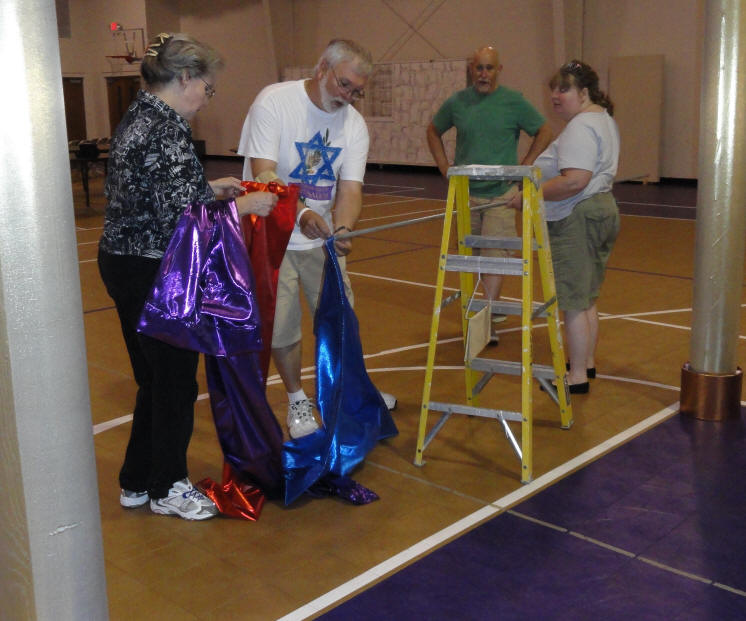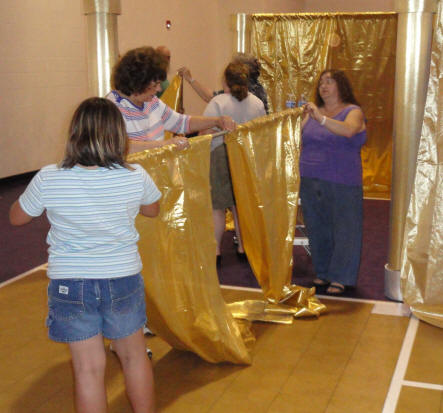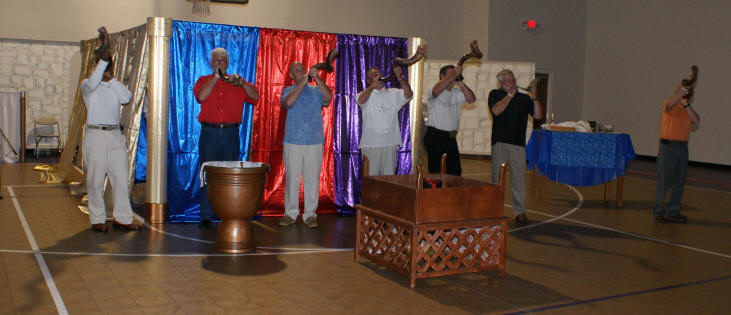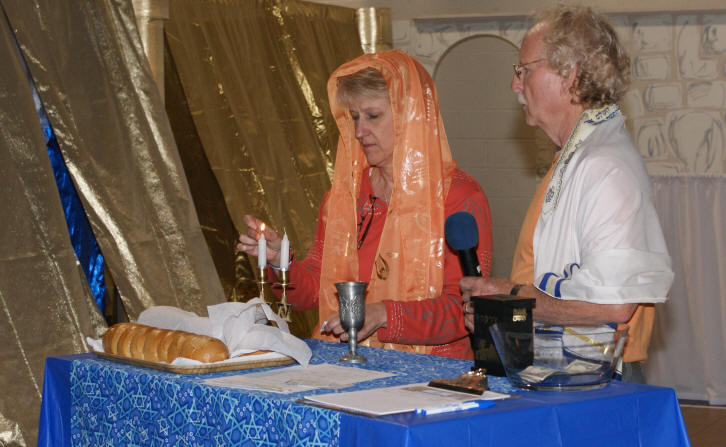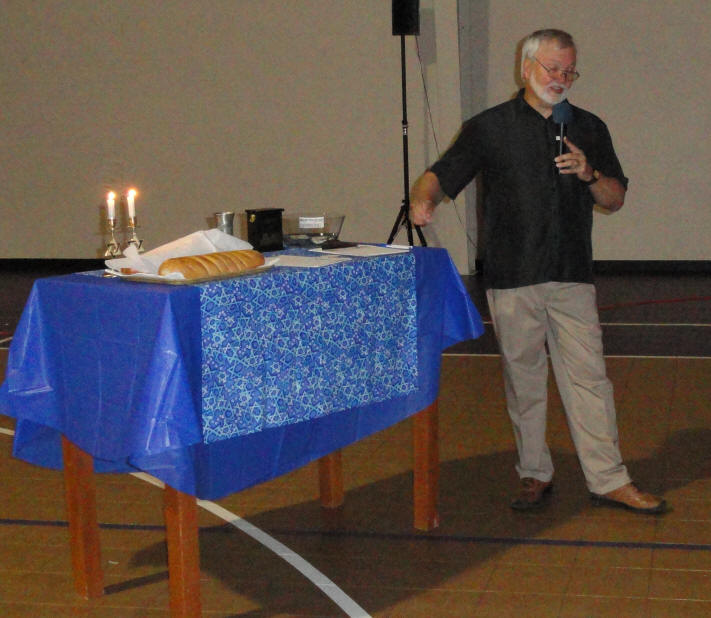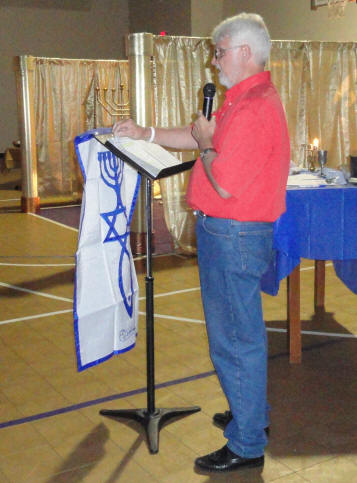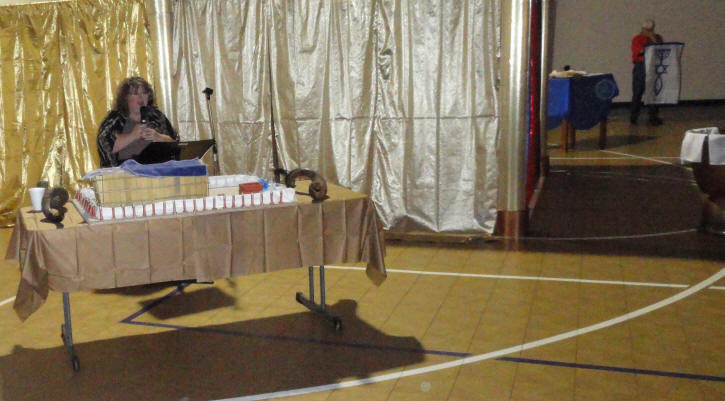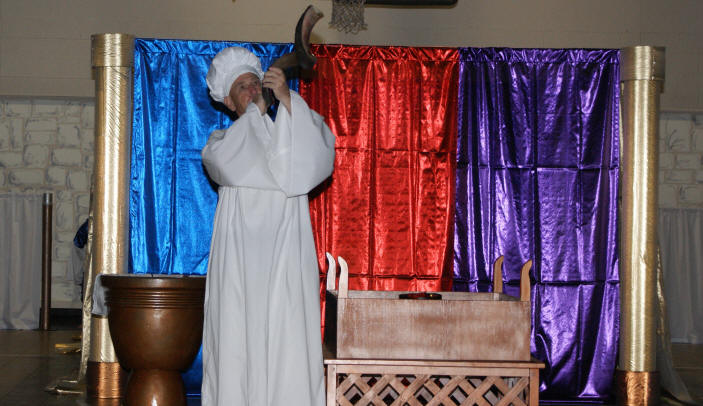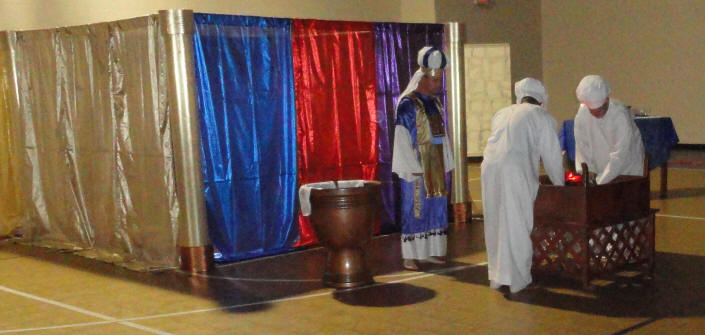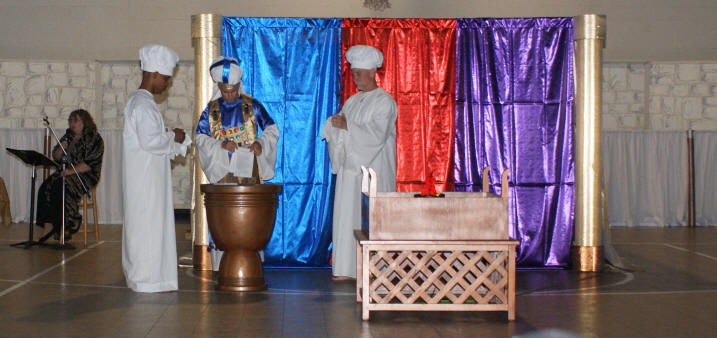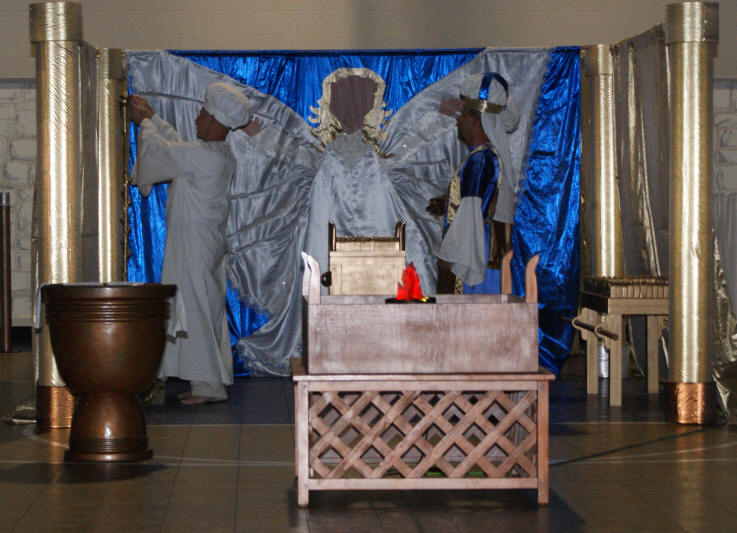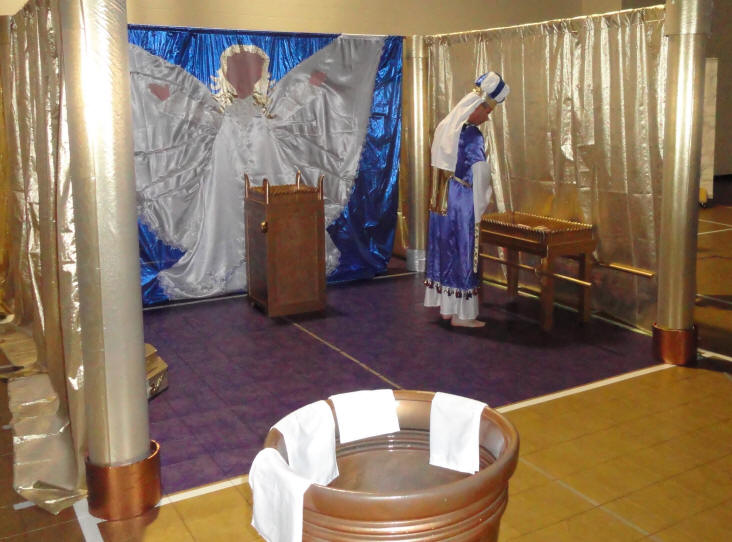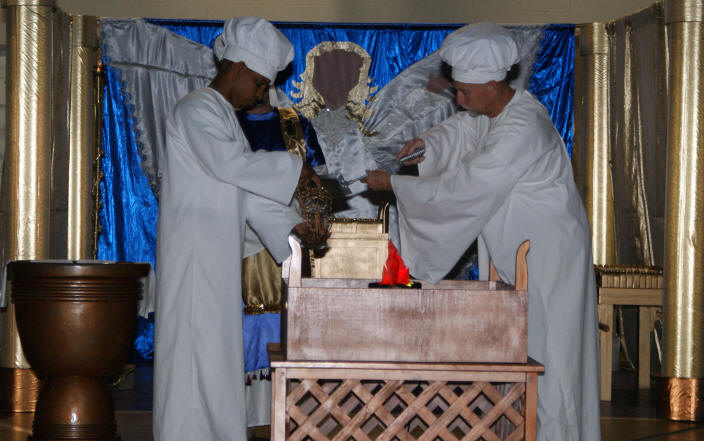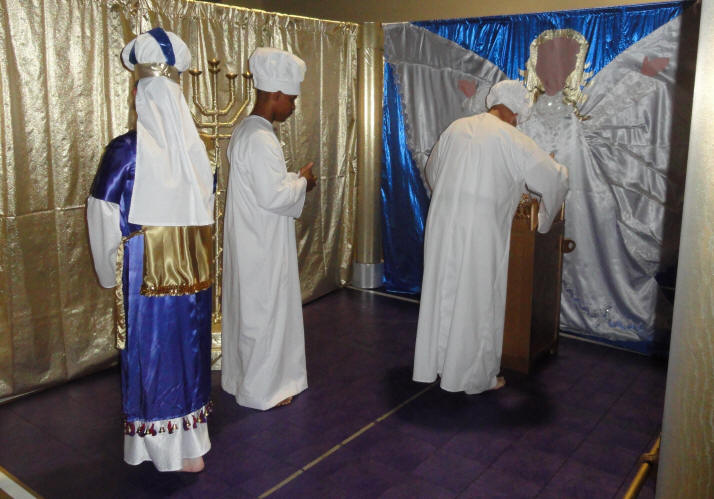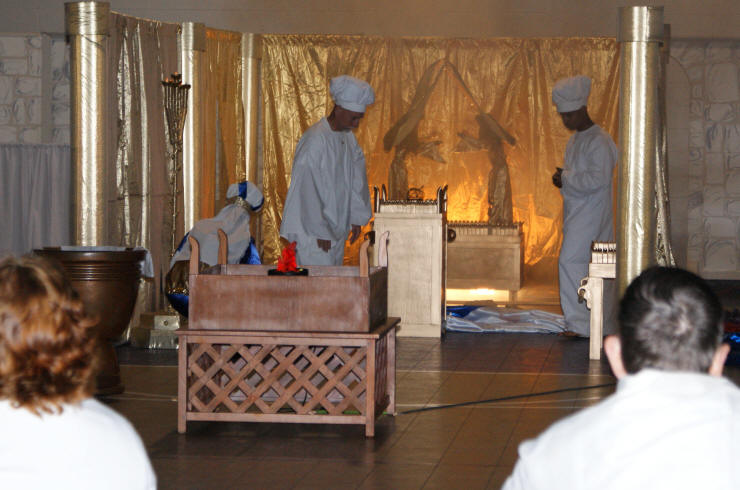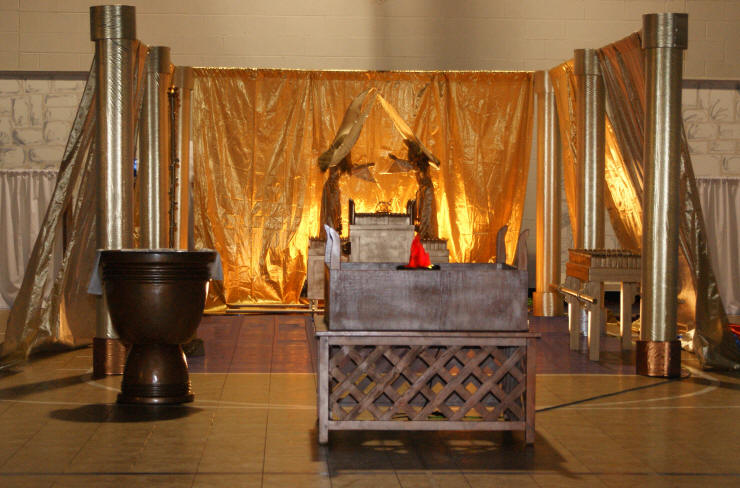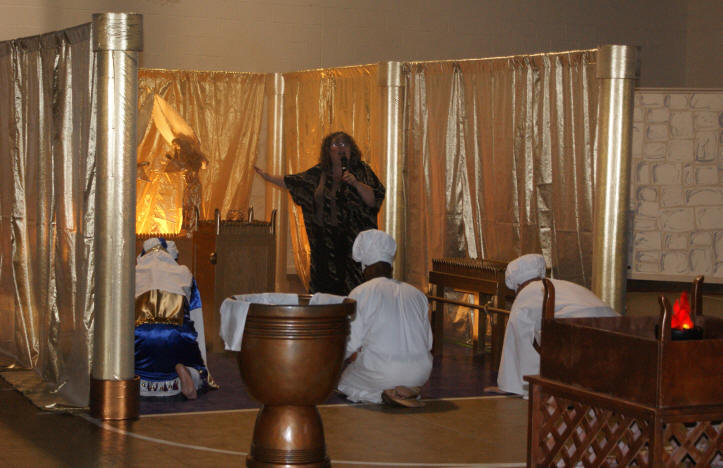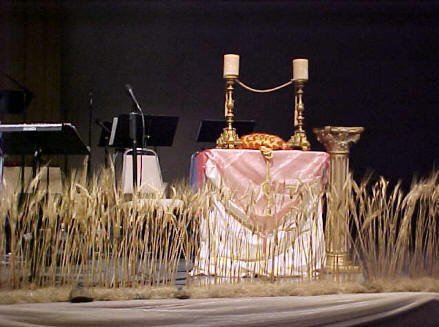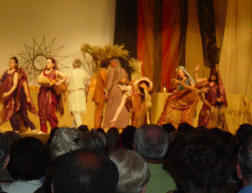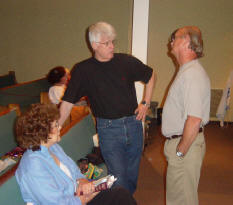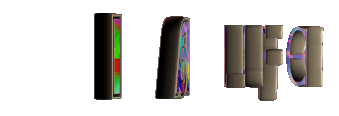Shavu'ot
Shavuot
![]()
![]()
![]()

SHAVUOT
How
was
SHAVUOT
Determined?
Other Names for
SHAVUOT
SHAVUOT
Themes
The 1st
SHAVUOT
The New
Covenant
SHAVUOT
SHAVUOT
Foods
The Book
of
RUTH
Historically
How To
Observe
SHAVUOT
Beit Yeshua's
SHAVUOT
Celebrations
2008
2009
2010
2011
2012
C.B.U.
SHAVUOT
Conference
Shavuot is a two day festival falling on Sivan 6th and 7th in the late spring of each year, usually in May or June. Shavuot is a Hebrew word that literally means "weeks". A weekly Hebrew greeting is "Shavuah Tov" - which means "Have a good week". Shavuot is the plural form of Shavuah. Shavuot is a one-day festival in Israel (Sivan 6) and a two-day festival (Sivan 6 & 7) outside of Israel. The High Priest would count 49 days (or 7 weeks), called "Counting the Omer", from the second day of Pesach. The fiftieth day was Shavuot, thus the name for the festival - weeks. If the first day of Pesach/Passover is on Thursday, Shavuot will begin on Friday. Other groups, however, (including the Karaites and historical Sadducees) believe that after "Counting the Omer", Shavuot falls on the day after the weekly Sabbath (Sunday). Leviticus 23
15 And ye shall count unto you from the morrow after the Sabbath, from the day that ye brought the sheaf of the wave offering; seven Sabbaths shall be complete;
16 Even unto the morrow after the seventh Sabbath shall ye number fifty days.
21 ... it shall be a statute for ever in all your dwellings throughout your generations.Other names for Shavuot include… Pentecost (Greek)
Hag Ha'Shavuot - Feast of Weeks (Ex.34:22)
Hag Ha'Katsir - Feast of Reaping (Ex.23:16)
Hag Ha’Bikkurim – Festival of the First Fruits (Num.28:26)
Hag Matan Torateinu – Festival of the Giving of our TorahAgriculturally, Shavuot was when individuals could bring the First Fruits (Bikkurim) of their harvest to the temple. The First Fruits were brought from the Seven Species for which the Land of Israel is praised: wheat, barley, grapes, figs, pomegranates, olives, and dates (Deut. 8:8).In ancient times, the grain harvest lasted seven weeks and was a season of gladness (Jer. 5:24, Deut. 16:9-11, Isa. 9:2). It began with the harvesting of the barley during Pesach/Passover and ended with the harvesting of the wheat at Shavuot. Shavuot was thus the concluding festival of the grain harvest. The eighth day of Sukkoth (Tabernacles) was the concluding festival of the fruit harvest.
During the existence of the Temple in Jerusalem, an offering of two loaves of bread from the wheat harvest was made on Shavuot.
Themes of Shavuot include… 1. God’s giving of the Torah on Mt. Sinai
2. The Ruach Ha’Kodesh (Holy Spirit) was given in the New Testament
3. The birth of the churchThe First Shavuot Fifty days after the Jews left Israel, Moses went up on top of Mt Sinai to talk with God, and God gives the Torah.
Exodus 19
4 Ye have seen what I did unto the Egyptians, and how I bare you on eagles' wings, and brought you unto myself.
5 Now therefore, if ye will obey (sh'ma - hear) my voice indeed, and keep (shamar - guard) my covenant, then ye shall be a peculiar treasure unto me above all people: for all the earth is mine:
6 And ye shall be unto me a kingdom of priests, an an holy nation. These are the words which thou shalt speak unto the children of Israel.
God gives Moses the 10 Commandments.
Exodus 20
2 I am the LORD thy God, which have brought thee out of the land of Egypt.
3 Thou shalt have no other gods before me.
4 Thou shalt not make unto thee any graven image.
7 Thou shalt not take the name of the LORD thy God in vain...
8 Remember the Sabbath day, to keep it holy.
12 Honour thy father and thy mother...
13 Thou shalt not kill.
14 Thou shalt not commit adultery.
15 Thou shalt not steal.
16 Thou shalt not bear false witness against thy neighbor.
17 Thou shalt not covet...
When the people saw that Moses delayed to come down from Mt. Sinai, they came to Aaron and requested that he make a golden idol for them to worship.
Exodus 32
19 And it came to pass, as soon as he came nigh unto the camp, that he saw the calf, and the dancing: and Moses' anger waxed hot, and he cast the tables out of his hands, and brake them...
20 And he took the calf which they had make, and burnt it in the fire...
26 Then Moses stood in the gate on the camp, and said, Who is on the Lord's side? Let him come unto me.
28 ...And there fell of the people that day about three thousand men.
Because of their sin in worshipping the golden calf, 3000 were killed when Moses came down from Mt. Sinai.
Exodus 34
1 And the LORD said unto Moses, Hew thee two tables of stone like unto the first: and I will write upon these tables the words that were in the first tables, which thou brakest.New Covenant Shavuot 1st Pentecost After Messiah's death and resurrection...
Acts 2
1 And when the day of Pentecost was fully come, they were all with one accord in one place.
2 And suddenly there came a sound from heaven as of a rushing mighty wind, and it filled all the house where they were sitting.
3 And there appeared unto them cloven tongues like as of fire, and it sat upon each of them.
4 And they were all filled with the Holy Ghost, and began to speak with other tongues, as the Spirit game them utterance.
38 Then Peter said unto them, Repent, and be baptized every one of you in the name of Jesus Christ for the remission of sins, and ye shall receive the gift of the Holy Ghost.
39 For the promise is unto you, and to your children, and to all that are afar off, even as many as the Lord our God shall call.
40 Then they that gladly received his word were baptized: and the same day there were added unto them about three thousand souls.Original Covenant New Covenant Torah given
50 days from crossing the Red Sea
Law written on stone tablets
3000 slainHoly Spirit Given
50 days from Messiah's resurrection
Law written on the hearts of men
3000 savedFood It is customary to eat at least one dairy meal during Shavuot as remembrance of God’s promise for a land flowing with milk and honey. The Torah is also compared to milk by King Solomon who wrote: "Like honey & milk, it lies under the tongue" (Song of Solomon 4:11) Cheesecakes are very popular during Shavuot - as well as dishes prepared with cheese. Cheese blintzes and cheese kreplach are popular among Ashkenazi Jews; kelsonnes (cheese ravioli) and atayef (a cheese-filled pancake) are popular among Syrian Jews; and Tunisian & Moroccan Jews eat a seven-layer cake called siete cielos (seven heaven). Yemenite Jews do not eat dairy foods on Shavuot.
The Book of Ruth There are five books in the Tanakh (Old Testament) that are know as "Megillot" and are publicly read in synagogues on different Biblical holidays. The Book of Lamentations, which details the destruction of the Temple, is read on Tisha B'Av; the Book of Ecclesiastes is read at Sukkot; the Book of Esther retells the events of Purim; and the Song of Songs (Song of Solomon) echoes the themes of springtime & God's love for the Jewish people is the reading for Pesach/Passover.
The book of Ruth is customarily read during the festival.
The Story of Ruth
Naomi, her husband and their two sons left Israel for Moas. They boys married Moabite women, Ruth and Orpah. Tragically, all three women lost their husbands. Naomi decides to return to Israel and urges her daughters-in-law to remarry and begin again. Orpah does, but Ruth does not.
Ruth 1:16
... Whither thou goest, I will go; and where thou lodgest, I will lodge; thy people shall be my people, and thy God my God:Ruth and Naomi return to Israel, impoverished and hungry. The Torah tells farmer to leave small sheathes that have been dropped or forgotten during harvest for the poor. Field corners had to be left for the poor to harvest, as well. Knowing this, Ruth goes to gather wheat in Boaz's field. Because Boaz had heard of Ruth's compassionate treatment of his relative Naomi, he treats Ruth kindly, permitting her to drink with his workers. Once Naomi hears this, she encourages Ruth to remind Boaz of his obligation to perform "yibum".
If a man died without leaving an heir, it was a mitzvah (commandment) for the deceased husband's close relative (called the "Kinsman Redeemer") to marry the widow so that the deceased husband's family line would not be extinguished. If a "kinsman redeemer" did not want to fulfill his obligation to marry his relative's widow, the rabbis encouraged the couple to sever their obligation to to each other through a ceremony where a shoe was removed from the male relative's foot.
Ruth followed Naomi's instructions and crept into Boaz's threshing room where he was sleeping (perhaps to guard the grain after the harvest). She laid down next to him and uncovered his feet. Boaz awoke and asked for an explanation. Ruth explained her predicament, but Boaz replied that a closer relative had to forsake his obligation to Ruth first.
When the unnamed relative declined to marry Ruth, Boaz marries her, producing a son, Oved, who becomes King David's grandfather. Messiah Yeshua was born from this lineage.
Ruth's words to Naomi and her taking on the covenant of Israel as her own, makes her an excellent role model, especially on Shavuot when we focus on the covenant of Israel with God. Little did she know what blessing would come from her lineage as a result of her kindness to Naomi, and her choosing the Jewish people as "her own". In 2006, Beit Yeshua did its first Shavuot play as part of one of our original home-group meetings. Rather than read the book of Ruth as is customary, we chose to present the story as an impromptu play, directly from the book of Ruth.
(Characters Left to Right)
Naomi, Baby Obed, Ruth, Boaz, City Elder, Woman, Director, Another Kinsman, Field ForemanInterested in a copy of our Shavuot Play? Click HERE
Tradition teaches that King David was born and seventy years later dies on the feast of Shavuot. Ruth was David's great-grandmother.
Shavuot is unlike other Jewish holidays in that it has no prescribed mitzvot (Torah commandments) other than the traditional festival observances of abstention from work, special prayer services and holiday meals. In addition to reading the book of Ruth, some decorate their homes and synagogues with greenery. Greenery was an important part of the story of the baby Moses - who was found among the bulrushes in a watertight cradle (Ex. 2:3) when he was three months old. Tradition says that Moses was born on 7 Adar and placed in the Nile River on 6 Sivan, the same day he later brought the Jewish nation to Mount Sinai to receive the Torah. It is also popular in many synagogues to observe an all-night Torah study. Due to its connection with the harvest, Shavuot is celebrated with special activities on Israeli kibbutzim. These agricultural settlements hold parades and special ceremonies to show off the fruits produced in their fields.
Shavuot With Beit Yeshua Beit Yeshua celebrates Shavuot each year - originally as a smaller home meeting - then eventually as a larger community gathering in the Family Life Center of Covenant Bible Church. The Book of Ruth is frequently read during the Feast of Shavuot.
After a time of praise, worship and Israeli Folk Dance, the group settles back for
the annual "spontaneous" play from the book of Ruth
When folks arrived, they never knew who'd be asked to step up and read the parts of Ruth, Boaz, Naomi, the Kinsman Redeemer, and others in the play.
We know that Israel is the "Apple of God's Eye", but the book of Ruth reminds us that Ha'Shem/Yahweh has not forgotten the Goy/Gentile. Ruth was a Moabitess, a gentile herself, yet from her marriage to Boaz came the lineage of King David and even Messiah Yeshua. The 2008 Cast included (from Left to Right)
Naomi (Rita), Ruth (Janice), Orpah (Amber), Jewish Woman living in the city (Jeanne),
Boaz (Chuck), The Foreman of Boaz's fields (Jeremy),
The Kinsman Redeemer (Bill), Play Director (Curtis), Jewish Elder (Doug)
Susan lights the Shavuot festival candles
and Doug says the blessings over the bread & wine
The group gathers for a group prayer for Israel ...
A time of Praise, Worship & Dance

We chose to remember the story of "Ruth" through our annual impromptu Shavuot Play
with an additional theme of "hats & head coverings" for this year's playCurtis introduces Naomi (Allison) and her daughters-in-law,
Ruth (Jeanne) and Orpah (Carolee), to the audience

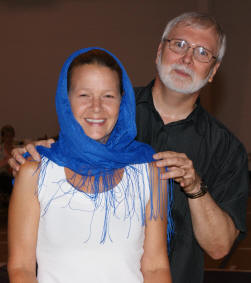
Boaz (Jeremy) and the Foreman (Chuck) over his lands and servants
Naomi & Ruth move their "tent" to Bethlehem
where Ruth gleans barley from the edges of Boaz's fields
The festivals are a wonderful way to visually teach our children about their Biblical heritage
Boaz, Ruth's "kinsman-redeemer", marries her
Ruth gave birth to a son and named him Obed
and he sure looks a lot like "Boaz"

The 2009 "Story of Ruth" Cast
Beit Yeshua gathered on Friday, May 17, 2010, to celebrate the Biblical Festival of Shavuot. In the Original Covenant the laws of God were written on tables of stone. In the New Covenant, God wrote His laws on the hearts of men.
As part of our Shavuot Celebration in 2010, a life-sized model of the Tabernacle of the Lord (Wilderness Tabernacle - provided by Bonnie Ogden & Iline Morrison) was set up in the Family Life Center of Covenant Bible Church. Iline & Bonnie set up the columns of the Tabernacle
Curtains are added to the front and sides of the Tabernacle
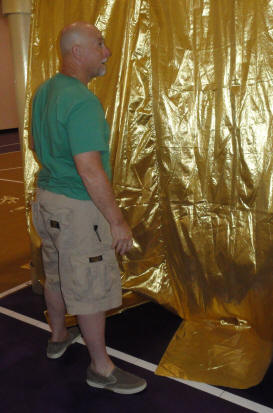
Placing the furniture in the Tabernacle - the Menorah and Incense Altar
The Family Life Center was totally decorated for Shavuot
Shofarot are sounded to begin the Shavuot Celebration
Blessings are said over candles, bread and wine
Curtis leads everyone in the Sh'ma & Shehecheyanu
Doug teaches about the Feast of Shavuot

Iline did a dramatic teaching about the Tabernacle of the Lord
... the materials used to make it
... the colors used
... and how we are to relate to it
The Tabernacle was a moveable “tent of meeting” that God commanded Moses to build. God wanted to dwell among His people, the Israelites. He wanted to have fellowship with them and to be able to communicate with them.
“…make a sanctuary for me, and I will dwell among them.” (Exodus 25:8)
“Then I will dwell among the Israelites and be their God. They will know that I am the Lord their God, who brought them out of Egypt so that I might dwell among them.” (Exodus 29:45-46)The Tabernacle and its courtyard were constructed according to a pattern set by God. We study the Tabernacle to understand the steps the Lord laid out for a sinful people to approach a holy God. And so God dwelled among His people in the Tabernacle in the wilderness. He appeared as a pillar of cloud over the Tabernacle by day and a pillar of fire by night in the sight of all Israel. The people would not set out on their journey unless the cloud lifted. It was an unmistakably powerful visual statement indicating God’s presence among them. The Tabernacle was built approximately 1440 BC and was the place where God dwelt with His people for 400 years. It was used from the time of the Exodus until the time of King Solomon, when the Temple was built.
“Enter through the narrow gate. For wide is the gate and broad is the road that leads to destruction, and many enter through it. But small is the gate and narrow the road that leads to life, and only a few find it.” (Matthew 7:13-14)
The Tabernacle was the center of the Israelite camp. The 12 tribes of Israel camped around the Tabernacle in a specific arrangement. There was only one gate by which people could enter into the tabernacle courtyard. The gate was 30 feet wide. It was located directly in the center of the outer court on the east end. The gate was covered by a curtain or screen made of finely twisted linen in blue, purple and scarlet.
The one and only gate is a representation of Messiah as the only way through which one could fellowship with God and worship Him. To do this, one must enter in through the gate to the place where God dwelled. Yeshua said …
“I am the way and the truth and the life. No one comes to the Father except through me.” (John 14:6)
“I am the gate; whoever enters through me will be saved.” (John 10:9)The shofar is sounded by one of the priests
The act of entering the gate to the Tabernacle was significant to the Israelites. By entering, one could find forgiveness of sin and fellowship with God. The first thing that one saw upon coming through the gate was the brazen altar, which served as a reminder of man’s sinfulness and his need for a blood sacrifice in order to be fellowship with God. One needed to repent and offer sacrifices for their sin. Those who did not repent were not entering this “narrow way.” The altar was the place for burning animal sacrifices. It showed the Israelites that the first step for sinful man to approach a holy God was to be cleansed by the blood of an innocent creature.
Fires in the Brazen Altar are kindled
The laver, or basin, was a large bowl filled with water located halfway between the brazen altar and the Holy Place. Although God did not give specific measurements for the Laver, it was to be made entirely of bronze. The priests were to wash their hands and their feet in it before entering the Holy Place.
The application for Believers today is that we are forgiven through Messiah’s work on the cross, but we are washed through His Word. We need to be washed daily in His Word to cleanse ourselves, so that we can serve and minister before Him.
Priest wash their hands at the Laver before they enter the Holy Place
There were three pieces of furniture in the Holy Place: the Menorah, the Table of Showbread and the Golden Altar of Incense.
The Menorah, or lampstand, was the only source of light in the Holy Place, so without it, the priests would have been walking around in the dark. Yeshua said…
“I am the light of the world. Whoever follows me will never walk in darkness, but will have the light of life.” (John 8:12)
“I have come into the world as a light, so that no one who believes in me should stay in darkness.” (John 9:46)A priest works on the light from the Menorah
The Table of Shewbread held 12 loaves of bread, representing the 12 tribes of Israel. “Showbread” also was called “bread of the presence” because it was to be always in the Lord’s presence. The table and the bread were a picture of God’s willingness to fellowship and communion (literally speaking, sharing something in common) with man. The High Priest prepares the Table of Shewbread
God commanded the priests to burn incense on the golden altar every morning and evening, the same time that the daily burnt offerings were made. The incense was to be left burning continually throughout the day and night as a pleasing aroma to the Lord. The incense was a symbol of the prayers and intercession of the people going up to God as a sweet fragrance. God wanted His dwelling to be a place where people could approach Him and pray to Him. “May my prayer be set before you like incense; may the lifting up of my hands be like the evening sacrifice.” (Psalm 141:2)
The priests prepare the incense for the Incense Altar
The High Priest was the only person who was ever allowed access to the Most Holy Place (Holy of Holies). He was allowed to go into the Most Holy Place only once a year on Yom Kippur (Day of Atonement) to atone for the sins of the people. When Yeshua died, the Veil that separated the Holy Place and the Most Holy Place was rent from top to bottom allowing all Believers access to the presence of God. Within the Holy of Holies, shielded from the eye of the common man, was one piece of furniture comprising two parts: the Ark of the Covenant and the atonement cover (or “mercy seat”) on top of it. Because the ark was God’s throne among His people, it was a symbol of His presence and power with them wherever it went. The three items in the ark were a reminder of man’s shortcomings but have taken on a different meaning since Messiah redeemed us from our sins. The pot of manna: When Yeshua walked on earth, He became God’s provision to us. Manna, the bread from heaven, in itself did not impart life. But Yeshua told us that He was the true bread from heaven.
Aaron’s budding staff: Yeshua didn’t reject God’s authority. He submitted Himself to the Father’s will and died on the cross. He came back to life like Aaron’s budding rod, “the firstfruits from the dead” (1 Corinthians 15:20).
The Ten Commandments: Yeshua didn’t reject God’s right standard of living. He lived a sinless life and obeyed God’s Torah perfectly, becoming our perfect sacrifice and intercessor.The High Priest prepares to enter the Most Holy Place (Holy of Holies)
The Most Holy Place with the Ark of the Covenant & Mercy Seat
But now a righteousness from God, apart from law, has been made known, to which the Law & Prophets testify.
This righteousness from God comes through faith in Jesus Christ to all who believe.” (Romans 3:20-22)
In 2011, Shavuot was celebrated on Friday, June 3, 7:00 to 9:30 PM, in the Family Life Center at Covenant Bible Church.
To see the photos and videos
CLICK HEREOur 2012 Shavuot Celebration is scheduled for Friday, May 25, 7:00 to 9:30 PM, at Chuck & Janice's home in Lincolnton. Contact me for more information.
C. B. U. Shavuot Conference C. B. U. (Christian Believers United) "used" to do a Shavuot conference each year in May at the Ridgecrest Conference Center in Black Mountain, North Carolina. Because of the expense of the facility and materials, the conference was eventually dropped. It's important to support local meetings and conferences if we want to keep them in our area.
The stage is set for the Festival of the First Harvest. 
Ruth gleans wheat from Boaz's fields.
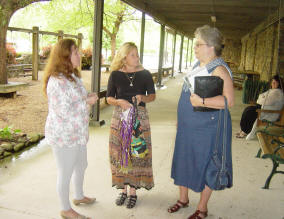
Melba, Linda, Carolyn, Lynda, Doug and Greg enjoy fellowship before the meeting begins.




